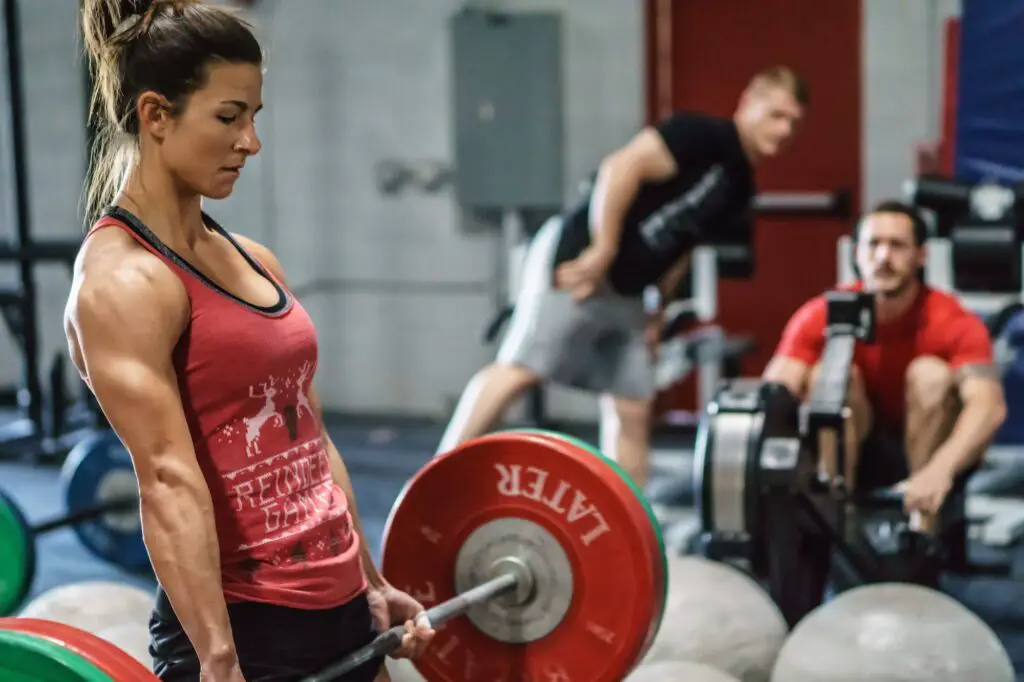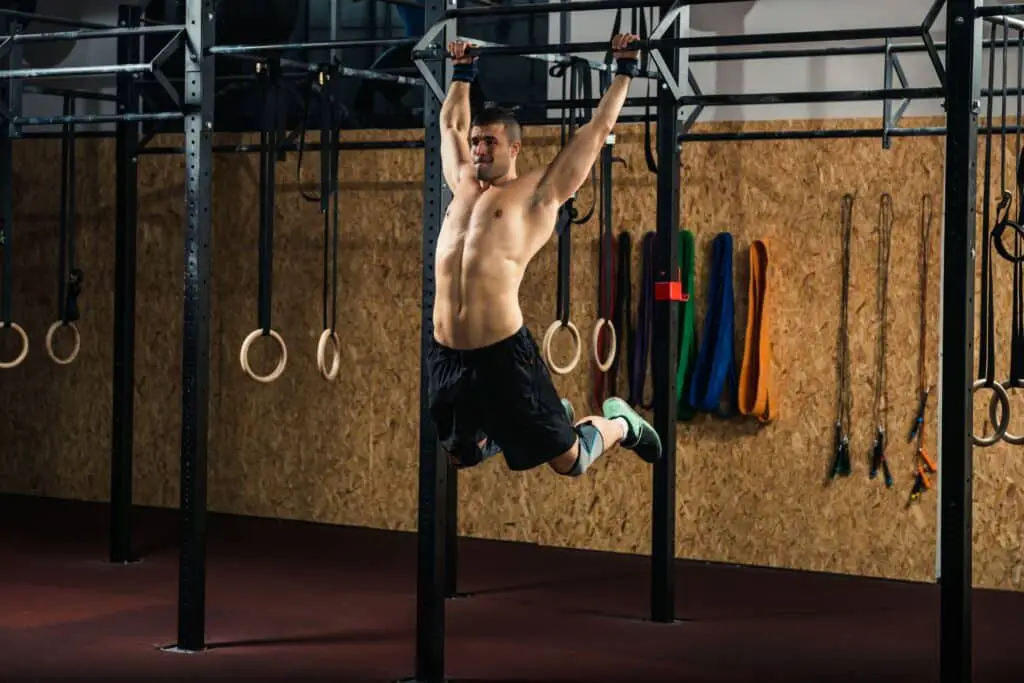Introduction
CrossFit, a high-intensity fitness program that has gained immense popularity in recent years, is often associated with grueling workouts that push participants to their physical limits. When we ask, “How long is CrossFit long?” We delve into the heart of what makes this exercise regimen unique and challenging.
Unlike traditional gym workouts, CrossFit emphasizes functional movements performed at high intensity. Workouts can range from quick, intense sessions lasting just a few minutes to longer, more enduring routines that can extend to 30 minutes or more. The duration of a CrossFit workout depends on various factors, including the specific exercises involved, the athlete’s fitness level, and the intended training goal.
In this exploration, we will examine the concept of workout duration within the context of CrossFit, uncovering the reasons behind the diverse timeframes and how they contribute to the program’s effectiveness in building strength, endurance, and overall fitness. Whether you’re a seasoned CrossFit enthusiast or someone considering this fitness journey, understanding the duration of CrossFit workouts is key to optimizing your training experience.

How long is CrossFit usually?
In the realm of CrossFit, the duration of workouts can vary depending on numerous factors. However, most CrossFit classes aim to deliver a high-intensity workout within a 45-minute to one-hour timeframe with most lasting an hour.CrossFit workouts are typically designed to be intense and efficient, providing a comprehensive fitness experience within a relatively short timeframe. While the duration can vary based on the specific workout programming, coach’s approach, and individual fitness goals, a typical CrossFit class often falls within the range of 45 minutes to one hour. This timeframe is considered optimal for balancing the intensity of the exercises with the need for recovery and maintaining safety.
Within this hour, participants engage in a combination of strength training, cardiovascular exercises, and functional movements, often incorporating elements like weightlifting, gymnastics, and high-intensity interval training (HIIT). The diversity of exercises and the high intensity at which they are performed contribute to the effectiveness of CrossFit in building strength, endurance, and overall fitness.
How many days should a beginner do CrossFit?
You can expect to do your CrossFit training around two to five days a week. Many beginners start doing CrossFit workouts for two days a week and then gradually increase it to five days a week after building their stamina and adjusting their bodies to these intense workouts.For beginners in CrossFit, the frequency of training typically depends on various factors, including their fitness level, recovery ability, and personal schedule.
2-3 Days a Week: Beginners often start with 2-3 days of CrossFit per week. This allows them to ease into the intensity of CrossFit workouts, adapt to the movements, and give their bodies sufficient time to recover between sessions.
Gradual Increase:As they become more comfortable with the workouts and their fitness levels improve, beginners can gradually increase their training frequency. Many choose to progress to 4-5 days a week over time.
Rest Days: Regardless of experience level, rest days are crucial. Beginners should incorporate rest days into their weekly schedule to allow for muscle recovery and reduce the risk of overtraining. Typically, 1-2 rest days per week are recommended.
Listen to Your Body: It’s essential to listen to your body and not push too hard too quickly. CrossFit can be demanding, and overtraining can lead to injuries or burnout. Pay attention to your body’s signals and adjust your training schedule accordingly.
Consult a Coach: If possible, seek guidance from a certified CrossFit coach or trainer. They can help you create a personalized training plan that aligns with your goals and ensures a safe and effective progression.
How do you eat while doing CrossFit?
To plan a balanced, Zone- and CrossFit-friendly meal, divide your plate into thirds and fill it with:
1/3 lean protein: Options include skinless chicken breast, fish, lean beef and low-fat dairy.
2/3 healthy carbs: Emphasize colorful, non-starchy vegetables and fruits with a low glycemic index (GI).Eating to support your CrossFit training is crucial for achieving your fitness goals and maintaining energy levels during workouts. The Zone Diet, which you mentioned, is one approach to nutrition that some CrossFit enthusiasts find beneficial due to its focus on balanced macronutrient ratios. Here’s a breakdown of how to eat while doing CrossFit.
Lean Protein: Include lean sources of protein in your diet to aid in muscle repair and growth. Options like skinless chicken breast, fish, lean beef, turkey, and low-fat dairy products are excellent choices. Aim to make protein roughly one-third of your plate.
Healthy Carbs: Carbohydrates provide the energy needed for intense CrossFit workouts. Opt for complex carbohydrates like whole grains (brown rice, quinoa, whole wheat), non-starchy vegetables (broccoli, spinach, kale), and fruits with a low glycemic index (berries, apples, citrus fruits). Fill about two-thirds of your plate with these carbohydrate sources.
Healthy Fats: Don’t neglect healthy fats, as they are essential for overall health. Incorporate sources like avocados, nuts, seeds, and olive oil into your meals in moderation.
Hydration: Staying well-hydrated is crucial for CrossFit. Drink plenty of water throughout the day, especially before, during, and after workouts. Consider including electrolyte-rich drinks if you have particularly intense training sessions.
Timing: Timing your meals around your CrossFit workouts can be beneficial. Eating a balanced meal containing carbohydrates and protein about 1-2 hours before a workout can provide you with the necessary energy. After a workout, consume a protein-rich meal or snack to support muscle recovery.
How do I get a flat stomach with CrossFit?
Jade recommends large compound barbell movements. We’re talking squats, lunges, deadlifts, thrusters (squat-to-overhead press), shoulder presses, barbell rows, as well as bodyweight exercises like strict pull ups and pushups. Don’t be afraid to go heavy on the weights.Achieving a flat stomach with CrossFit involves a combination of targeted exercises and a well-rounded fitness approach. The recommendations you mentioned, such as incorporating large compound barbell movements and bodyweight exercises, are indeed effective for building core strength and developing a toned midsection.
Here’s a more detailed plan to help you get a flat stomach with CrossFit:
Compound Barbell Movements: Large compound barbell movements, like squats, deadlifts, and thrusters, engage multiple muscle groups, including the core. These exercises are excellent for building overall strength, including the muscles of the abdomen. Ensure proper form to maximize their effectiveness and reduce the risk of injury.
Bodyweight Exercises: Include bodyweight exercises like strict pull-ups and push-ups in your CrossFit routine. These exercises not only target the upper body but also engage the core muscles as stabilizers.
High-Intensity Interval Training (HIIT): CrossFit often incorporates HIIT workouts, which are great for burning calories and reducing body fat, including around the midsection. HIIT workouts are known for their effectiveness in promoting fat loss.
Core-Specific Work: While compound movements engage the core, it can be beneficial to add dedicated core exercises to your routine. Planks, Russian twists, leg raises, and hanging knee raises are examples of core-specific exercises that can help sculpt and strengthen your abdominal muscles.
Balanced Nutrition: Achieving a flat stomach also requires attention to your diet. Focus on eating a balanced diet that includes lean proteins, healthy fats, and complex carbohydrates. Limit processed foods, sugary drinks, and excessive consumption of refined carbohydrates. Ensure you are in a calorie deficit (burning more calories than you consume) to lose body fat.
What is the best thing to eat before CrossFit?
Quick digesting carbs like bananas or oats are good for providing a boost of energy right before a training session. Generally speaking, eating a small to medium sized meal 60-90 minutes before you workout is a good place to start. Eat a balanced meal of lean protein and carbohydrates, and limit the fat intake.Eating the right foods before CrossFit can provide you with the energy and nutrients needed to perform at your best.
Carbohydrates: Carbohydrates are your primary source of energy for high-intensity workouts like CrossFit. Opt for quick-digesting carbohydrates like bananas, oats, or whole-grain bread. These foods provide a rapid energy boost.
Protein: Including some protein in your pre-workout meal can help with muscle repair and provide a steady release of energy during your workout. Lean sources of protein like chicken, turkey, or a protein shake can be a good choice.
Timing: Aim to eat a small to medium-sized meal containing carbohydrates and protein about 60-90 minutes before your CrossFit session. This timing allows your body to digest and absorb the nutrients, providing sustained energy throughout your workout.
Hydration: Proper hydration is crucial for optimal performance. Drink water leading up to your workout to ensure you’re well-hydrated. However, avoid consuming excessive amounts of water immediately before exercising to prevent discomfort.
Limit Fat and Fiber: While fats and fiber are essential components of a balanced diet, they can slow down digestion. Before CrossFit, it’s best to limit high-fat and high-fiber foods to avoid digestive discomfort during your workout.
Personal Preferences: Your pre-workout meal should align with your personal preferences and dietary restrictions. Experiment with different food combinations to find what works best for you and your stomach.
Here’s an example of a pre-CrossFit meal:
A banana (quick-digesting carbs)
A small serving of grilled chicken or a protein shake (protein)
A slice of whole-grain bread or a small portion of oats (additional carbs)
Water for hydration
How many meals a day for CrossFit?
Here are some CrossFit nutrition and timing guidelines:
Aim to eat 2-3 meals if you are in a fat-loss phase, 3-4 meals if you are in a muscle gain phase. If you’re just sustaining your weight, 2-4 will do.The number of meals you should have each day while doing CrossFit can vary depending on your specific goals, lifestyle, and individual preferences. The guidelines you provided offer a good starting point, but it’s essential to tailor your meal frequency to your unique needs.
Fat-Loss Phase: If your primary goal is fat loss, consuming 2-3 meals a day can be effective. This approach may include two larger meals and one smaller meal or snack. The key is to create a calorie deficit while ensuring that you’re still getting adequate nutrients and energy to support your CrossFit workouts and overall health.
Muscle Gain Phase: If you’re aiming to build muscle, a slightly higher meal frequency of 3-4 meals a day can be beneficial. This allows for more even distribution of protein intake throughout the day, promoting muscle protein synthesis and recovery. Include protein-rich meals and snacks to support muscle growth.
Weight Maintenance: If your goal is to maintain your current weight and fitness level, a meal frequency of 2-4 meals a day can work well. This range provides flexibility, allowing you to adjust based on your appetite and activity level.
Listen to Your Body: Regardless of your specific goal, it’s crucial to listen to your body’s hunger and fullness cues. Eating when you’re hungry and stopping when you’re satisfied is a sustainable approach to meal timing.
Balanced Nutrition: Regardless of the number of meals, focus on consuming balanced, nutrient-dense foods. Include lean proteins, healthy fats, complex carbohydrates, and plenty of fruits and vegetables in your diet. Stay hydrated throughout the day.
Should I drink a protein shake before CrossFit?
Having that protein pre-workout can be a good thing as it can be absorbed quickly and transported to muscle cells to promote growth.
If you haven’t eaten for a fewhours before your workout, then consuming protein before you hit the gym can help you feel fuller and satiated.Consuming a protein shake before CrossFit can be beneficial, especially in certain circumstances.
Here are some considerations to help you decide if a pre-workout protein shake is right for you:
Timing: If you haven’t eaten a balanced meal containing protein within a few hours before your CrossFit workout, a protein shake can help ensure that you have adequate protein available for muscle repair and recovery during your session.
Quick Absorption: Protein shakes are a convenient source of quickly absorbed protein, making them suitable for pre-workout consumption. Whey protein, in particular, is known for its rapid absorption and ability to deliver amino acids to muscle cells efficiently.
Satiety: Protein can help increase feelings of fullness and satiety. If you find that you’re hungry before your CrossFit session, a protein shake can help curb your appetite and provide sustained energy during your workout.
Muscle Preservation: Pre-workout protein can also help prevent muscle breakdown during intense exercise. This can be especially beneficial if you’re engaging in a long or high-intensity CrossFit session.
Individual Preferences: Some individuals prefer to have a protein shake before their workout, while others may find it unnecessary or prefer to eat a balanced meal. Your choice should align with your comfort and what works best for your body.
If you decide to include a pre-workout protein shake in your routine, consider the following tips:
Timing: Aim to consume the protein shake about 30 minutes to an hour before your CrossFit session to allow for digestion and absorption.
Protein Source: Choose a high-quality protein source for your shake, such as whey, casein, plant-based proteins like pea or hemp protein, or a combination of these. Select a protein powder that suits your dietary preferences and any allergies or sensitivities.
Additional Ingredients: You can enhance your pre-workout shake by adding carbohydrates for energy (e.g., oats, a banana) or a small amount of healthy fats (e.g., nut butter) for sustained energy.
Hydration: Don’t forget to hydrate before your workout. Water or a low-sugar electrolyte drink can help maintain proper hydration.
Is CrossFit training hard?
But it’s also very intense, so it’s not for everyone. If you’re a beginner, you’ll want to start with something else to get your body used to exercise before taking on CrossFit. The intensity makes it better suited to people who are used to regular activity. Even then, take it slow and pace yourself.CrossFit training is known for its intensity, and whether it’s hard or not depends on your fitness level, experience, and individual preferences.
Intensity: CrossFit workouts are designed to be intense and challenging. They often involve high-intensity interval training (HIIT), heavy lifting, and a wide variety of functional movements. This intensity can make CrossFit physically demanding, even for experienced athletes.
Scalability: One of the strengths of CrossFit is its scalability. Workouts can be adjusted to accommodate different fitness levels. Beginners can start with modified movements, lighter weights, and shorter workout durations to build their strength and stamina gradually.
Personalized Approach: The difficulty of CrossFit can vary greatly from person to person. Your individual fitness level, prior exercise experience, and overall health play a significant role in determining how challenging CrossFit will be for you.
Coached Guidance: Proper coaching is essential in CrossFit. A knowledgeable coach can provide guidance on form, technique, and appropriate scaling options, making the training more accessible and safer.
Community and Support: Many CrossFit gyms foster a sense of community and support, which can help individuals stay motivated and overcome challenges. The camaraderie and encouragement from fellow CrossFit enthusiasts can make the training experience more enjoyable.

Conclusion
The duration of a CrossFit class can vary, but it generally falls within the range of 45 minutes to one hour. CrossFit workouts are known for their intensity and efficiency, delivering a high-impact fitness experience in a relatively short time frame. This duration allows participants to engage in a diverse range of exercises, including strength training, cardiovascular workouts, and functional movements, all aimed at building strength, endurance, and overall fitness.
The flexibility in workout duration within CrossFit caters to individuals with different goals and schedules. Beginners may start with shorter workouts and gradually progress to longer sessions as they build their fitness levels. Regardless of the specific duration, the emphasis in CrossFit remains on quality over quantity, with an emphasis on proper form, technique, and safety.
Ultimately, the length of a CrossFit class is designed to provide a challenging yet manageable fitness experience, making it accessible to a wide range of participants seeking to achieve their health and fitness objectives.CrossFit classes are not only about the duration but also the intensity and variety they offer. The combination of short, high-intensity workouts and functional movements provides an efficient and effective means of achieving fitness goals. The CrossFit philosophy focuses on constantly varied workouts, which means that participants can expect a different challenge in each class, keeping workouts engaging and preventing plateaus in progress.

